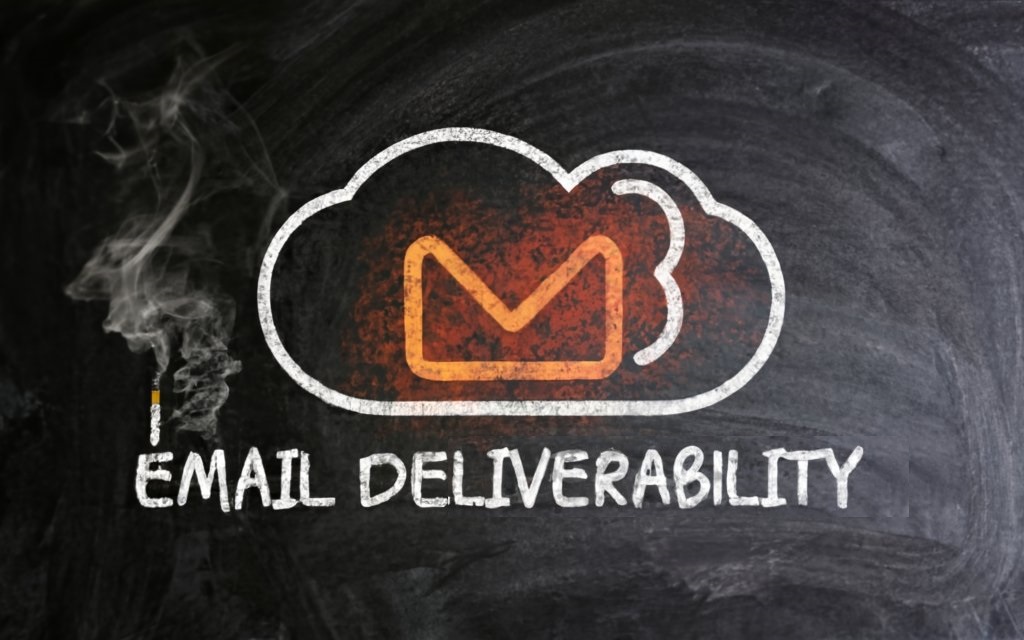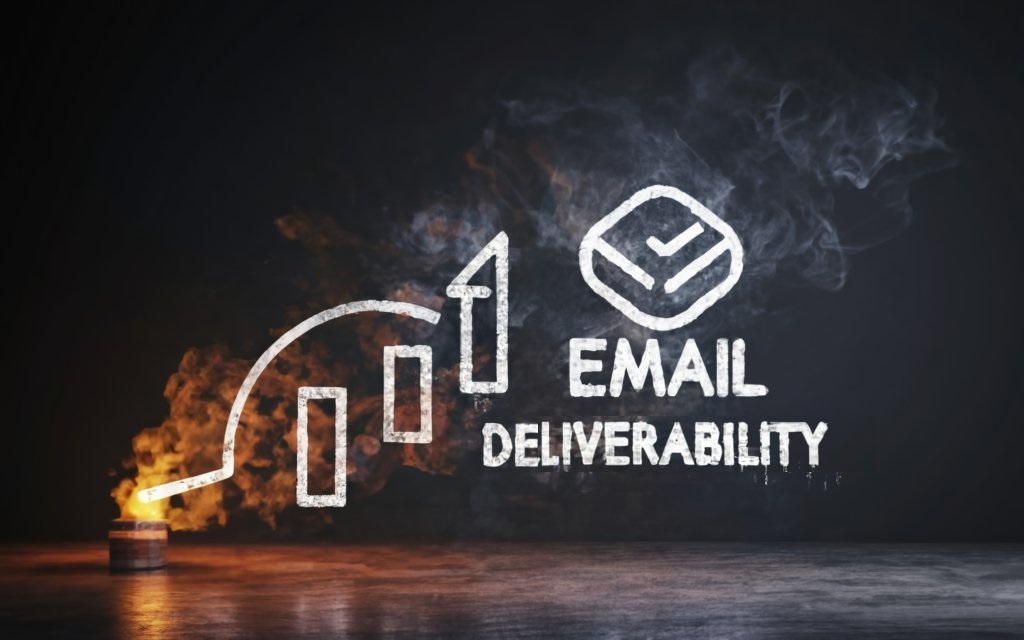Juggling multiple DMARC records? Want to level up your inbox game? Get ready to become a deliverability demigod! This complete guide explores conquering DMARC complexity, optimizing email visibility, and turning subscribers into raving fans. Let’s dive in!
What are DMARC Records and Why They Matter
In the ongoing battle against spam, phishing, and email fraud, DMARC records have emerged as an important technical tool for enhancing email deliverability and security. But what exactly are DMARC records and why should senders care about properly configuring them?
What is DMARC and How It Works
DMARC (Domain-based Message Authentication, Reporting and Conformance) is an email authentication protocol that builds on SPF and DKIM. It allows senders to indicate what servers are authorized to send email on their behalf.
Recipients check incoming emails against the sender’s published DMARC record. This record specifies whether to reject, quarantine, or monitor messages from unauthorized sources.
For instance, example.com might publish a DMARC record indicating only its designated servers can send mail from @example.com. If an attacker spoofs mail from example.com, the receiving server would check it against the DMARC record and take action.
DMARC records have 3 key components:
- Record Syntax: Specifies domain, policy, and reporting URIs.
- Alignment: Checks “From” address against authentication mechanisms.
- Policy: Instructs receivers how to handle unauthorized mail.
When properly implemented, DMARC prevents spoofing and impersonation, improving deliverability.
How DMARC Improves Email Security and Deliverability
Consumers increasingly ignore or delete emails they deem risky. By authenticating legitimate sources, DMARC builds sender reputation.
Specifically, DMARC helps:
- Prevent impostor scams: Fraudsters spoof known brands for phishing. DMARC blocks this.
- Improve inbox placement: Email providers trust DMARC-protected domains.
- Combat business email compromise (BEC): DMARC reduces spoofing that facilitates BEC scams.
- Increase customer trust: Recipients feel more secure interacting with DMARC-compliant brands.
For senders, properly implemented DMARC results in:
- Fewer messages sent to spam: Better inbox placement and less filtering.
- Lower abuse complaints: DMARC aligns “From” addresses with valid sources.
- Increased protection: DMARC builds sender credibility and reputation.
- More actionable reporting: Aggregate and forensic reports provide deliverability insights.
In short, DMARC is a prerequisite for stellar email deliverability and security in 2022.
Understanding DMARC Record Syntax
A DMARC record begins with a “v=DMARC1” tag, followed by these key attributes:
- Record Domain (
p=): The protected domain name, like example.com. - Policy (
p=): What receivers should do with failing messages – none, quarantine, or reject. - Percentage (
pct=): The sample of messages subjected to DMARC checks. - Reporting URIs (
rua=,ruf=): URIs to send aggregate and forensic reports.
For example:
v=DMARC1;p=none;pct=100;rua=mailto:[email protected]This record specifies that example.com wants receivers to monitor all email (100% of messages) and send reports to the designated address. However, no action will be taken for failing messages (policy of “none”).
Senders can adjust these parameters to fit their needs – using relaxed settings at first, then tightening policies over time. For deliverability, it’s wise to slowly roll out DMARC and analyze feedback reports.
Of course, proper DMARC implementation requires coordinating with your IT, security, and email teams. But wise senders make DMARC deployment a priority in 2022, given the immense benefits for reputation and inbox placement.
With a fundamental grasp of DMARC records and syntax, we can now explore some common use cases and best practices for configuring multiple DMARC records. Stay tuned for more deliverability insights!

When and Why to Use Multiple DMARC Records
Most senders need only a single DMARC record for their domain. But there are situations where configuring multiple DMARC records makes sense for advanced deliverability strategies.
Let’s explore some common use cases where savvy senders employ multiple records.
Managing Email from Multiple Domains and Subdomains
Large companies often have complex email environments with numerous domains and subdomains. These include:
- Primary brand domain (example.com)
- Regional domains (usa.example.com, europe.example.com)
- Product domains (support.example.com, shop.example.com)
- Email marketing domains (newsletter.example.com)
Ideally, each domain and subdomain would have its own dedicated DMARC record. This allows granular control and reporting. For instance, the marketing subdomain might have a relaxed DMARC policy during deployments, while the primary domain enforces strict authentication.
Without separate records, poor deliverability from one subdomain can negatively impact the main domain. Segmenting DMARC by subdomain isolates issues and reputation.
Transitioning to a New DMARC Policy
DMARC policies often start relaxed at “none”, then gradually tighten to “quarantine” and “reject”. But changing policies can disrupt email, so gradual transitions are advised.
Here are two techniques for smoothly moving to stricter DMARC policies:
1. Percentage-Based Rollouts
Rather than updating the DMARC record directly, leave the policy in “monitor” mode and adjust the percentage from 0% towards 100%. For example:
- Start DMARC at p=none, pct=0%
- Ramp up to p=none, pct=10%
- Increase to p=none, pct=25%
- Eventually go to p=none, pct=100%
This slowly exposes more messages to DMARC checks before fully enforcing the policy.
2. Using Separate DMARC Records
Maintain two DMARC records during the transition:
- Original record: (p=none, pct=100%)
- New record: (p=quarantine, pct=0%)
Over time, increase the percentage on the new record while lowering the original. This allows policies to be incrementally updated.
Using Percentage-Based Rollouts
As described above, gradually rolling out DMARC using percentages is generally advised:
- Begin with relaxed settings at pct=0% or pct=10%.
- Monitor aggregate and forensic reports to catch issues early.
- Slowly increment percentages towards 100% over several months.
- Tighten policy from none→quarantine→reject once 100% reached.
This gives email systems time to adjust while phasing in DMARC. Starting at 100% risks disruptions, but low initial percentages allow learning before full enforcement.
Advanced senders might create separate DMARC records solely for percentage rollouts. For example:
Mail1._dmarc.example.com v=DMARC1;p=none; pct=10%
Mail2._dmarc.example.com v=DMARC1;p=none; pct=25%
_dmarc.example.com v=DMARC1;p=none; pct=100%Setting Different Policies for Different Email Sources
Some mass email senders have legitimate reasons to set different DMARC policies for certain sources, namely:
- Transactional Email: Stricter policies on promotional email, but more relaxed on transactional.
- Agency Partners: Custom DMARC settings for agency-sent mail.
- IT Systems: Progressive policies tailored to specific services and providers.
In these cases, custom DMARC records give granular control:
Promotions._dmarc.example.com v=DMARC1;p=reject
Newsletters._dmarc.example.com v=DMARC1;p=quarantine
Transactions._dmarc.example.com v=DMARC1;p=noneThe ability to fine-tune DMARC for subdomains, percentage rollouts, or sources is an advanced technique. But utilzing multiple records provides flexibility as DMARC deployments mature.
Best Practices for Configuring Multiple DMARC Records
If multiple DMARC records make sense for your scenario, here are some tips for smooth execution:
Start with Relaxed Settings and Tighten Over Time
Even if you need tighter policies on certain emails eventually, begin incremental rollouts with forgiving specifcations. Start at p=none or quarantine with low percentages, monitoring feedback before strengthening.
Monitor Aggregate and Forensic Reports
Analyze DMARC reports to catch issues early. Forensic reports offer transaction-level details to refine configurations.
Coordinate Changes Across Teams
Collaborate with IT, ISPs, and other internal teams when adjusting multiple records. Make changes in alignment with operations.
Consider Third-Party DMARC Expertise
If managing complex DMARC deployments across multiple domains, engagement with specialized consultants may be wise. They can audit configurations and recommend tactical improvements.
The capability to configure multiple DMARC records provides flexibility – but also complexity. Proper execution requires planning, collaboration, and monitoring. But for enterprises with diverse email environments, multiple records allow you to use DMARC strategically, not just tactically.
Handle them skillfully, and your inbox placement and sender reputation will benefit.

Why it matters for business success?
Email remains one of the highest ROI channels for digital marketing and customer engagement. But without stellar deliverability, the impact of email campaigns is drastically reduced. Let’s explore why every business should prioritize optimizing email deliverability.
Deliverability Affects Email Reach and Revenue
Quite simply, if your emails never reach recipients’ inboxes, you lose opportunities to connect, convert, and generate revenue.
Poor deliverability means your messages are:
- Blocked by spam filters
- Sent to the promotions tab
- Ignored or deleted without being seen
This directly reduces potential sales and conversions from email campaigns.
Consider these statistics:
- Emails sent to the primary inbox have 70% higher open rates than other tabs.
- Inbox placement can improve click-through rates by up to 50%.
- Gmail filters nearly 25% of emails sent by small businesses.
Maximizing inbox placement ensures your emails get seen by more of the right people. This visibility translates directly to the bottom line.
Deliverability Maximizes ROI of Email Marketing Efforts
Email requires significant time and resource investments, including:
- Building lists and managing subscriptions
- Crafting compelling content
- Design and development
- Testing and optimization
- Ongoing deliverability maintenance
Poor inbox placement undermines the potential ROI from these efforts and investments. But reliable email deliverability ensures maximum return:
- Higher open and click-through rates
- Increased website traffic, conversions, and sales
- Improved customer and prospect engagement
- More successful re-engagement campaigns
In short, stellar deliverability is key to maximizing the substantial investments made into email marketing programs.
Good Deliverability Helps Avoid Spam Folders and Blacklists
Spam filters and blacklists are the enemies of inbox placement. Just a few missteps can land senders in these dreaded destinations:
- Spam folder purgatory
- Gmail’s “Promotions” tab
- Aggressive filtering and throttling
- ISP and domain blacklists
Once trapped here, it becomes an uphill battle to regain trust and reputation. Proactive deliverability helps avoid these scenarios completely.
Technical and hygiene best practices protect sender credibility. This minimizes negative impacts from filters, blocks, or blacklists over time.
Deliverability Influences Sender Reputation and Brand Trust
Consumers tend to:
- Distrust promotional content from unknown senders
- Assume bulk email is spam
- Expect personalization and relevance from brands
Email deliverability builds engagement by reinforcing positive brand associations in the inbox. On the flip side, landing in the spam folder erodes consumer confidence and trust.
Strategic deliverability practices signal you are a legitimate, reputable sender. This perception makes subscribers more likely to open, read, and positively engage with your messages over time.
In summary, effective email deliverability generates increased visibility, opens, clicks, trust, and sales. That’s why every modern marketer should champion deliverability internally.
Key Steps to Improve Email Deliverability
Optimizing deliverability requires a multipart strategy spanning technical and creative realms. Here are key steps every sender should take:
Optimize Technical Elements Like IP, Domain, Server
Email infrastructure directly impacts inbox placement. Important technical elements to monitor and maintain include:
- Clean, dedicated IP addresses: The IP reputation determines filtering.
- Properly configured domains: Correct SPF, DKIM, and DMARC records.
- Up-to-date email servers: With security patches and capacity.
- Fast page load speeds: For click-through landing pages.
Learning the technical side or partnering with experts lays the foundation for success.
Focus on List Hygiene and Quality Subscriber Data
Who you send to, and how, greatly affects reputation. Maintain list quality by:
- Confirming active, engaged subscribers via confirmation messages.
- Promptly removing inactive or bounced addresses.
- Honoring unsubscribe requests immediately.
- Seeking and capturing double opt-in consent.
- Monitoring engagement metrics like open and click-through rates.
Proper list hygiene signals reputability as a sender.
Send Relevant Content to Engaged Recipients
What you send impacts deliverability as much as how you send it. Boost engagement by:
- Providing personalized value with each message.
- Matching content to subscriber preferences and behaviors.
- Sending only valuable information subscribers want to receive.
- Giving recipients content tailored to their interests.
- Optimizing subject lines for relevance and open rates.
Segmented, targeted content keeps subscribers opening and engaging.
Monitor and Respond to Feedback Signals
Deliverability isn’t “set it and forget it”. You need to monitor key metrics and signals such as:
- Complaint rates
- Bounce rates
- Unsubscribe rates
- Sent, open, and click-through volumes
- Engagement by segment and campaign
- Blacklist statuses
Dig into feedback to continuously refine your approach.
Use Authentication Protocols Like SPF, DKIM, and DMARC
Finally, deploy vital email authentication protocols to prove you’re a legitimate sender:
- SPF aligns servers sending on your behalf.
- DKIM cryptographically validates messages.
- DMARC builds on SPF and DKIM for policy enforcement.
When implemented properly, these protocols build sender credibility for higher inbox placement and protection.
Optimizing technical factors, content relevance, and authentication protocols form the essential trifecta for managing deliverability effectively over the long-term.

Conclusion
Building great deliverability across the technical, content, and protocol spheres takes time and discipline. But the business rewards are well worth the investment.
Here are some final tips as you work to improve email visibility and engagement:
- Verify technical foundations like IPs and infrastructure.
- Obsess over list quality and subscriber consent.
- Send targeted content that provides value.
- Analyze metrics and feedback continuously.
- Deploy authentication protocols gradually.
- Partner with deliverability experts as needed.
With consistent focus in these areas, your inbox placement and sender reputation will climb steadily. That directly translates into more sales, conversions, and growth over the long haul.
So tackle deliverability proactively and persistently. The compounding benefits over time are substantial as open rates, trust, and response from subscribers increases month after month.
Final Tips for DMARC and Deliverability
And there you have it – a comprehensive guide to conquering DMARC records and email deliverability in 2022.
We covered a lot of ground here. To recap, you now know:
- What DMARC is and how it boosts security and inbox placement.
- When and why setting multiple DMARC policies makes sense.
- How to gradually roll out and refine multi-record configurations.
- Why deliverability is crucial for email success.
- Technical, hygiene, and content factors that influence deliverability.
- How to monitor metrics and feedback to improve over time.
Whew! That was a lot of deliverability wisdom packed into one article.
As we wrap up, I want to leave you with some final words of advice:
Start simple – Complexify DMARC and deliverability over time, when needed. Don’t overcomplicate early efforts.
Phase rollouts – Limit blast radius and risk during DMARC and deliverability transitions. Take it slow.
Inspect and analyze – Lean heavily on aggregate and forensic reporting to refine approaches.
Collaborate across silos – Changes require coordination across teams. Bring key players together.
Consider outside experts – Consultants provide experience and bandwidth for large-scale initiatives.
Verify foundations – Have technical protocols and hygiene elements covered before focusing on advanced tactics.
Obsess about relevance – Dial-in valuable content tailored to engaged subscriber segments.
Monitor continuously – Use metrics and feedback to guide ongoing optimizations.
Build sender repute – Earn trust through good behaviors like DMARC compliance.
Partner strategically – Seek help navigating DMARC and deliverability complexity if needed.
Whew, this sends us home with a full toolbox for DMARC and deliverability success in the years ahead.
The journey is ongoing, but you now have the roadmap and wisdom to master critical inbox placement and authentication protocols. Be bold yet measured in your implementations.
And may your DMARC records be configged for maximum security, your deliverability be primed for high engagement, and your subscribers be thrilled with each receiving relevant message!

Summary
- DMARC records authenticate email and improve deliverability by aligning domains with authorized sending infrastructure.
- Multiple DMARC records provide flexibility to configure policies for subdomains, percentage rollouts, or transactional vs promotional email.
- Start DMARC policies relaxed and tighten gradually over time based on aggregate and forensic reporting.
- Excellent email deliverability is crucial for business success, driving more opens, clicks, conversions, and revenue.
- Focus on optimizing technical factors, list hygiene, relevant content, actionable metrics, and authentication protocols.
- A comprehensive, persistent approach to deliverability improves engagement, response rates, and sender repute over time.
- Consider DMARC and deliverability imperatives together, as core strategies for maximizing email ROI through placements, security, and subscriber trust.
- Take a phased, data-driven approach based on monitoring metrics and feedback from inboxes.
- Enlist help from specialists if needed to tackle DMARC and deliverability complexity across large email programs.
- Mastering inbox authentication and visibility builds quality subscriber relationships and directly improves the bottom line.
Frequently Asked Questions
Q: What is DMARC and why does it matter?
A: DMARC authenticates email by aligning sending domains with authorized infrastructure. This prevents spoofing and improves deliverability.
Q: When should you use multiple DMARC records?
A: For subdomains, transitional policies, percentage rollouts, or segmenting transactional vs promotional email.
Q: What are some DMARC best practices?
A: Start with relaxed policies, monitor reports, collaborate across teams, consider external experts.
Q: How can businesses improve email deliverability?
A: Focus on technical factors, list hygiene, relevant content, actionable metrics, and authentication protocols.
Q: Why is deliverability important for marketers?
A: It maximizes opens, clicks, conversions, and revenue from email campaigns.
Q: How can you monitor and refine deliverability over time?
A: Analyze metrics like opens, clicks, bounces, spam complaints. Then optimize based on insights.
Q: What core protocols help improve deliverability?
A: SPF, DKIM, and DMARC authenticate legitimate sending domains and infrastructure.
Q: How long does it take to improve deliverability?
A: It’s an ongoing process, but usually 3-6 months to see noticeable results if executing well.
Q: Should you use consultants for help?
A: Yes, consider experts to assist with large or complex DMARC and deliverability initiatives.
Q: What is the number one goal of DMARC and deliverability?
A: To build sender reputation and subscriber trust for higher engagement.

